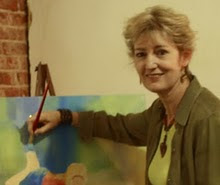Painting a House Portrait Lesson One: Getting Started – The Planning Stage
“Fail to plan and you plan to fail”, as the old saying goes, is totally applicable to art. Sure, there is always that element of “spontaneous creation” but my best paintings have been ones that I planned out well beforehand. A lot of other artists who make their living at their craft will agree with me.
At the risk of stating the obvious, getting started on your house portrait first and foremost begins with having a suitable house as the subject of your painting. There needs to be some aesthetic or interesting element that inspires you to do the painting, but don’t lose sight of the fact that beauty is in the eyes of the beholder. If you are doing a house portrait painting for a friend or relative, think of what the painting will mean to them and it is amazing how good your work of art will turn out. For example, that ramshackle farmhouse that your mother was brought up in might not look like much but to her it is imbued with nostalgia and happy family memories. The ancient shaggy cedar tree that frames the house was where she and her siblings played for hours, swinging on an old tractor tire; the old wooden gate is what they would race to open when they were helping father bring in the cows before supper. These elements should be part of the portrait therefore.
Your first step is to work out the best angle of the house and take photos. Usually front on is not that exciting. It’s generally too boxy. It would be the same if you were to do a portrait of a person or a car for example. The two points to take into consideration when taking the photos are a) what is the most flattering angle of the house that shows off its personality and the surroundings and b) is there any foliage blocking a clear view of the home, in which case you may be restricted to one view only, i.e., the only one you can see.
As mentioned above, the garden and surroundings of the house are very important. These are part of its character, especially a home with beautifully tended gardens which are the pride and joy of its occupants. And remember that the great thing about doing an original painting as opposed to just taking a photo, is that you get to indulge in “artistic license” to some degree. Just like a portrait of a person, you can’t change or improve facial features but you can change or improve the environment your subject is in, i.e., the background of the portrait. It’s the same with house portraits. You can make the house more visible by “trimming” the surrounding trees, or tidying up an out-of-control garden or even putting flowers in bloom to add vibrant dashes of color.
Take plenty of photos from each angle. That way if you are in any doubt as to what will look best on your canvas you can solve this by reviewing the photos. Remember to also take close-ups of windows, doors and other details that you may not be able to see clearly when it comes to doing the painting. Of course, you can always sit outside the house and do it right on the spot, but this can often be challenging in terms of uncomfortable temperatures, changing light, wind, as well as the odd downpour. So good photos are an excellent back-up in these situations.
Once you have accomplished the above, the next step is decide on the medium you will use. My next article, Lesson Two, will cover that step.
Leisa Collins
Leisa Collins combines her artistic skills under the motto “Art with a Message.” Her website stresses the importance of the artist bringing about social change and includes an online gallery of landscapes and portraits. She specializes in personalized house portraits, pet portraits, child portraits and original landscape paintings.






No comments:
Post a Comment